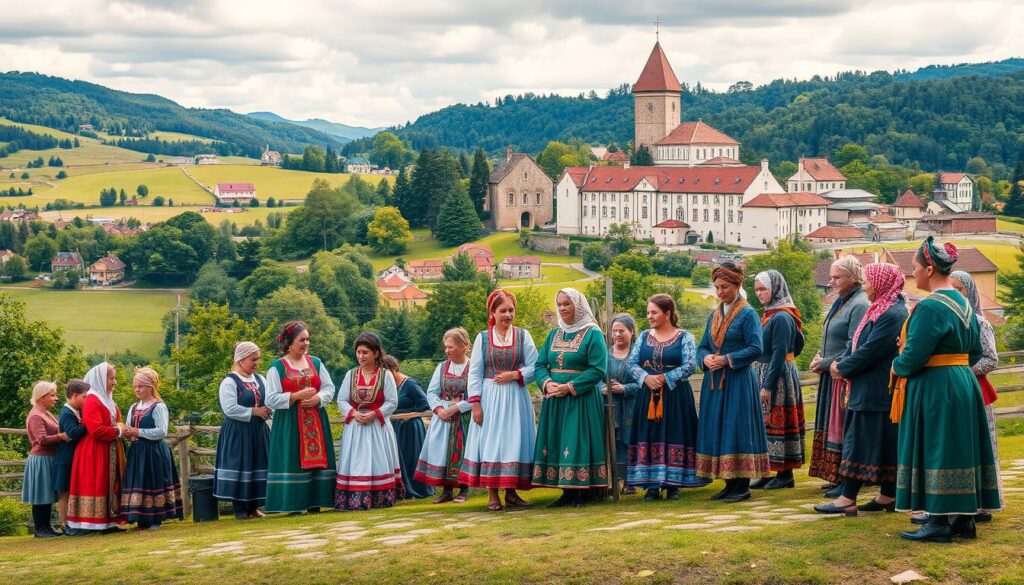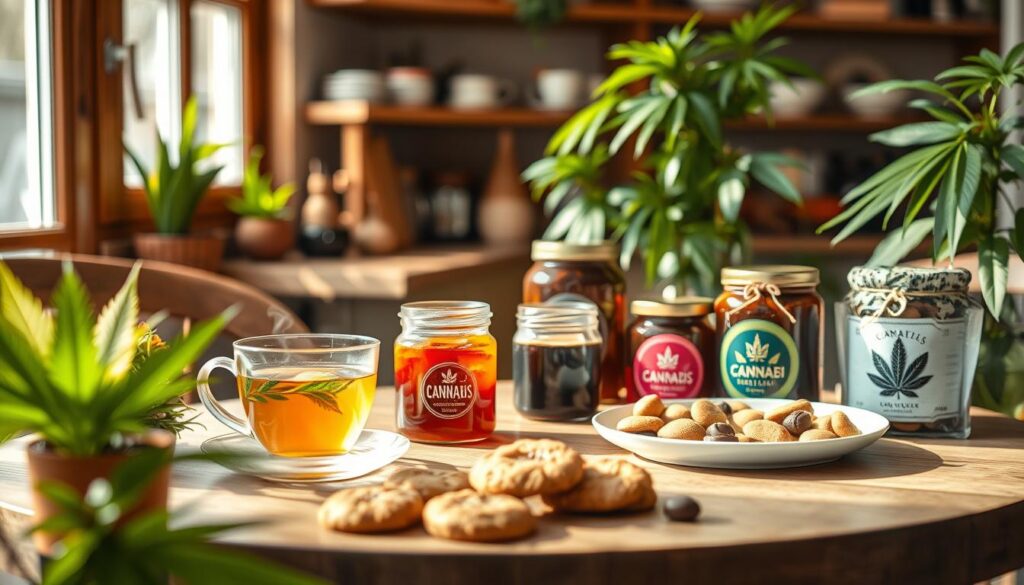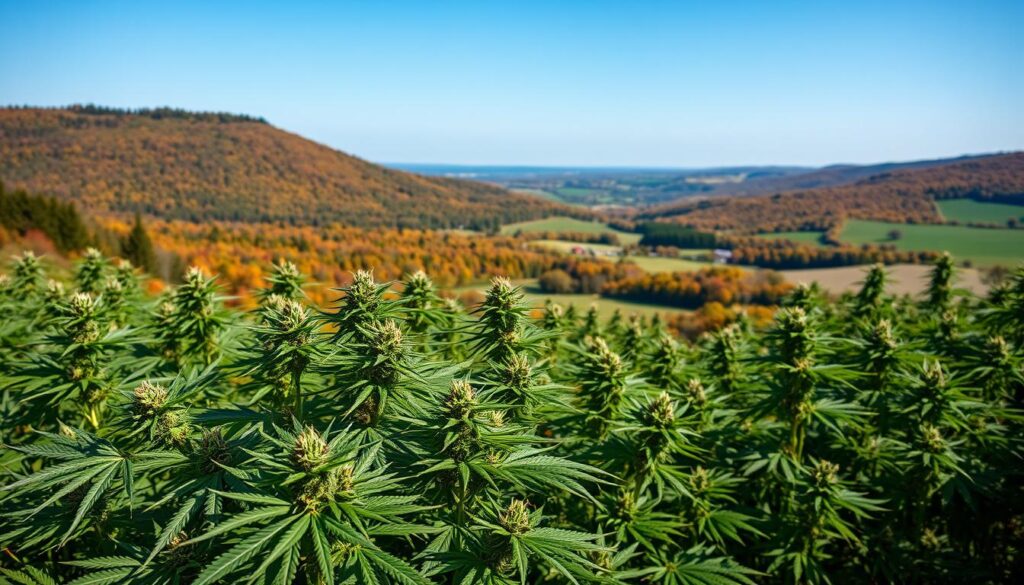Welcome to Rezekne, Latvia, where weed has a special place. This guide explores cannabis cultivation, growing marijuana, and using wild plants. It’s all about the Latgale region’s traditions.
Rezekne is a city full of diversity. It shows how local knowledge and culture use these plants. You’ll learn about laws, safe use, and hemp production in this guide.
If you’re curious or live here, this guide is for you. It’s a journey through traditions, laws, and views on weed in Rezekne. Get ready to see how past and present meet in this Latvian city.
Key Takeaways
- Explore the diverse cultural and ecological landscape of Rezekne, Latvia, and its relationship with weed and other wild plants.
- Understand the legal framework, availability, and safety considerations for a responsible weed experience in Rezekne.
- Discover the traditional foraging practices and sociocultural dynamics that influence the use of weed and other wild plants in the Latgale region.
- Learn about the impacts of habitat change and declining foraging practices on the availability and use of wild plants, including weed.
- Gain insights into the diverse sociocultural groups of Latgale and their unique perspectives on the use of weed and other wild plants.
Exploring the Wild Food Plant Culture of Latgale
The Latgale region is known as the “Land of Blue Lakes.” It has a diverse landscape. This has shaped the local culture and knowledge.
From fields to forests and rivers, this area is perfect for finding wild food plants. People use weed for many things.
Latgale’s Diverse Landscape and Heritage
Latgale’s history and people are unique. There are Latgalians, Old Believers, and Russian-speaking inhabitants. This mix leads to varied wild plant foraging practices.
This traditional ecological knowledge has been passed down. It’s key to managing natural resources in Latgale.
Traditional Knowledge of Wild Plant Foraging
The people of Latgale love the wild food plants around them. They make recreational tea, jams, and snacks from these plants. This shows their strong Latgale heritage and bond with the land.
“The wild food plants of Latgale are not only a source of sustenance but also a reflection of our deep-rooted connection to the land and its history.”
Local Ecological Knowledge and Weed in Rezekne
The use of wild plants, like weed, in Rezekne comes from local knowledge. This knowledge has grown over many years. It helps manage natural resources well.
Keeping this cultural diversity and old ways is key. It protects the area’s natural heritage.
Preserving Cultural Diversity and Natural Resources
Ethnobotanical research shows how important local ecological knowledge is. A study in Acta Botanica Brasilica found that 27-34% of how people see Atlantic Forests comes from this knowledge. This is in northeastern Brazil.
A 2019 review in the same journal talked about ten key questions and issues for ethnobotanical research. It shows how it helps us understand how humans and nature interact.
The use of wild plant uses in Rezekne is linked to its cultural diversity. A 2014 study in the Journal of Ethnobiology and Ethnomedicine found that age, gender, and money status matter. They affect keeping traditional ecological knowledge alive.
By valuing and helping these different views, Rezekne’s natural resource management gets better. This keeps the area’s natural and cultural treasures alive.
“The sustainable use of wild plants in Rezekne is closely tied to the region’s cultural diversity. By recognizing and supporting these diverse community perspectives, the natural resource management in Rezekne can be strengthened, ensuring the continued vitality of the region’s rich natural and cultural heritage.”
Understanding the Sociocultural Groups of Latgale
The Latgale region in Latvia is full of different groups. Each group has its own culture and traditions. These include the Latgalians, Old Believers, and a mix of Russian-speaking people.
These groups have greatly influenced Latgale’s culture. They use wild plants, like weed, in their daily lives.
Latgalians: Preserving a Linguistic and Cultural Legacy
The Latgalians are the original people of Latgale.
Old Believers: Safeguarding Traditions Amidst Change
The Old Believers came to Latgale in the 17th century.
The Mixed Group: Blending Cultures and Traditions
Latgale also has a group of Russian-speaking people. They come from different beliefs. They mix different traditions, including using wild plants, into their lives.
This mix of groups makes Latgale special. It shapes how they live with nature and use plants like weed.

Weed in Rezekne: Recreational Tea, Jams, and Snacks
In Rezekne, people love using weed and wild plants in fun ways. They make tasty teas, jams, and snacks with it. This shows how much they value the plant in their cooking.
Making weed tea is a big part of Rezekne’s culture. These teas are relaxing and help people bond. They taste great, mixing the weed’s earthy flavor with sweet honey or berries.
Weed is also key in Rezekne’s jams and preserves. Foragers pick the plant’s flowers and leaves to make tasty spreads. These jams are perfect with bread, or in dressings.
But weed’s uses don’t stop there. People in Rezekne make snacks with it too. They make crunchy crackers and chewy bars. These snacks are healthy and taste good, showing off the plant’s flavors.
Enjoying weed tea, jam, or snacks is a big part of Rezekne’s culture. It connects them to their land and history. They celebrate their natural world through food.

“Weed is more than just a medicinal plant for us – it’s a vital part of our culinary identity, connecting us to the land and our ancestors.”
– Maija Berzina, Latgalian Foraging Expert
Habitat Loss and Declining Foraging Practices
The tradition of foraging in Latgale is facing big challenges. Habitat loss and fewer people gathering wild plants like caraway and chamomile are big problems. These changes hurt the local people’s ability to use these plants, including weed.
Impacts on Caraway and Chamomile Gathering
The drop in caraway gathering and chamomile gathering in Latgale is due to lost habitats. As areas are cleared for cities, farms, or other uses, these plants are harder to find. This makes it tough for locals to keep their foraging traditions alive.
- The habitat loss Latgale has cut down on caraway, a plant loved for food and medicine.
- Also, the foraging practices decline Latgale has hit chamomile, a plant with a long history in the area.
Without these plants, Latgale’s culture and traditions are at risk. It also makes it hard for locals to meet their daily needs and make a living.
“The decline in caraway and chamomile gathering shows we must save Latgale’s natural places and traditions. These plants are key to the culture and help the community a lot.”
Conclusion
This guide has shown us the amazing world of weed in Rezekne and Latgale. We learned about the local knowledge, culture, and foraging traditions. These have made Latgale special.
Latgale is facing problems like losing habitats and foraging traditions. We must keep the area’s culture and nature safe. By understanding the links between people, practices, and nature, we can protect Latgale’s gifts for the future.



I Was looking for weed and i came across Zeus weed recommended by a friend . Zeus is super friendly, making it easy to get cannabis products. The delivery service is reliable with professional riders ensuring timely arrivals.
The quality of their products is top-notch, and their customer service is attentive and knowledgeable, offering helpful recommendations. Highly recommended for anyone seeking convenience, quality, and professionalism.
Add his Zangi private number for confidential correspondence text.
Zangi private Number : 1047789965
Click link for zangi : https://services.zangi.com/dl/conversation/1047789965
Contact him email : weedzeus35@gmail.com
Note:
He accept only btc/usdt and do not take cash payment.
Thanks bro, we ordered from him for the first time and couldn’t have been happier. They were willing to drive all the way out to my hotel as fast as possible . They were very helpful when we had a bunch of questions on the strains. We used both the Zangi app and text them directly . Prices are extremely reasonable – cheaper than where we were ordering from for years. They also have the strongest cannabis we’ve seen being sold – which my wife needs for medical reasons.
Will definitely be ordering from Zeus weed again.
Excellent Customer Service!!
It’s so great to speak with nice humans that care about their customers. Every order I’ve made has been 100%.
I will absolutely continue to purchase from Zeus Weed.
Zeus Weed is what made my experience great! He was kind to me and patient and answered all my questions. I loved everything about the experience. Highly recommend!
email them.. weedzeus35@gmail.com
Ordering was effortless. The delivery time was faster than expected, and the delivery guy called me to coordinate the pick up spot and was very respectful. The only problem is that i have to send bitcoin which i am not not use to it .